Computer Hardware | Computer Awareness and Proficiency - SSC CGL PDF Download
| Table of contents |

|
| Input Devices |

|
| Keyboard |

|
| Pointing Device |

|
| Optical Mark Reader (OMR) |

|
| Optical Character Recognition (OCR) |

|
| Magnetic Ink Character Recognition (MICR) |

|
| Printers |

|
| Input/Output (I/O)Port |

|
Computer hardware consists of physical parts that users can touch. - These components encompass electronic, electrical, and mechanical devices within a computer system.
- Computer hardware: Refers to the tangible parts of a computer that users can physically interact with.
- Hardware components: Include electronic, electrical, and mechanical devices utilized in a computer system.
Input Devices
An input device is a device that lets you put information into a computer.
This information is used for analysis, storage, and to tell the computer what to do.
These devices send data into the computer's main memory. They take instructions from the user and change them into computer language.
Here are some commonly used input devices:
- Keyboard
- Mouse
- Touchscreen
- Scanner
Keyboard
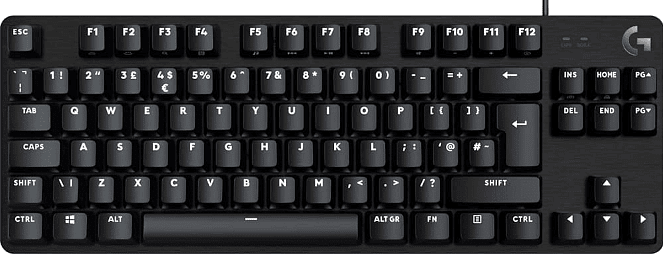
- Keyboard is utilized to input data or information into a computer system in either numeric or alphabetic form.
- When a key is pressed, the keyboard interacts with a keyboard controller and keyboard buffer.
- The keyboard controller stores the code of the pressed key in the keyboard buffer.
- Users can input text and commands using this device.
- The keyboard layout was derived from a standard typewriter with additional keys.
- There are various types of keyboards like QWERTY, DVORAK, and AZERTY.
Types of Keys
Alphanumeric Keys: These keys include letters (A, B, C, ..., Z) and numbers (0, 1, 2, 3, ..., 9).
Numeric Keys: These keys are on the right side of the keyboard and include numbers and math symbols.
Function Keys: These keys, labeled F1 to F12, can be programmed for specific actions.
Cursor Control Keys: These keys include directional arrows (left, right, up, down) in a T shape and additional keys for cursor control.
- Home: Used to move the cursor to the start of a line or document.
- End: Moves the cursor to the end of a line.
- Page Up: Moves the view up one page and cursor to the previous page.
- Page Down: Moves the view down one page and cursor to the next page.
Other Keys: These include keys like Control, Enter, Shift, Escape, Backspace, Delete, Caps Lock, Num Lock, Windows, Spacebar, and Tab.
- Control Key: Performs special functions when combined with other keys, like Ctrl + C for copying.
- Enter Key: Used to finish an entry and start a new one, similar to pressing OK.
- Shift Key: Used to type symbols on keys like numbers and to toggle between lowercase and uppercase letters.
- Escape Key (Esc): Cancels ongoing operations and can open the Start menu with Ctrl.
- Backspace Key: Erases typed content.
- Delete Key: Erases information from the computer's memory.
- Caps Lock Key: Toggles capital letters.
- Num Lock Key: Enables/disables the numeric keypad.
- Windows Key: Opens the Start menu.
- Spacebar Key: Provides space between words, the longest key on the keyboard.
- Tab Key: Moves the cursor to a set point, useful for indentation in documents.
Note QWERTY keyboard contains total 104 keys.
Caps Lock and Num Lock keys are called as ‘toggle keys’ because when they are pressed, they toggle or change their status from one state to another. Shift, Ctrl and Alt keys are also known as modifier keys.
Pointing Device
- A pointing device is used to communicate with the computer by pointing to the location on the monitor.
- Movements of the pointing device are echoed on the screen by movements of the pointer.
- Some commonly used pointing devices are described below
Mouse:
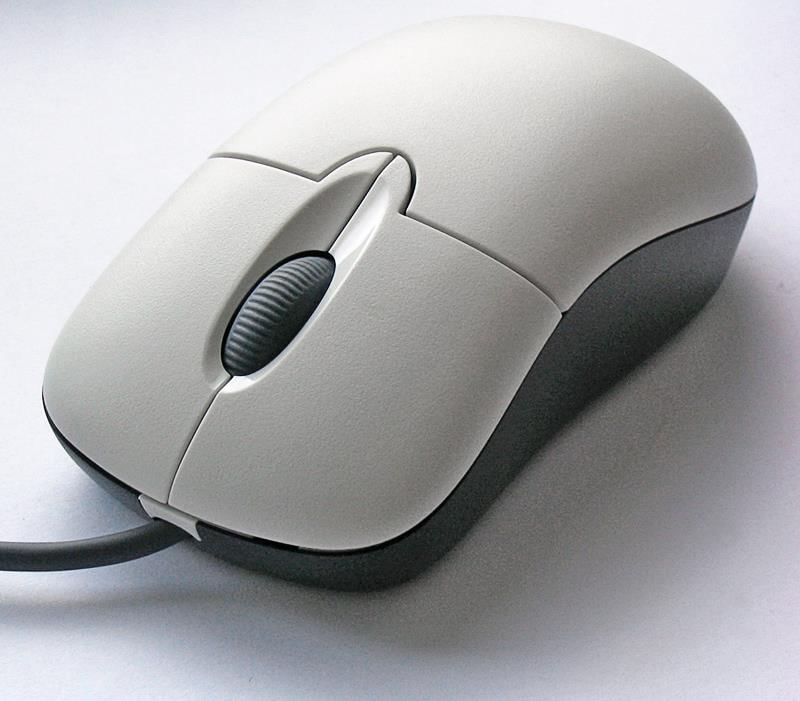
- Mouse: A small device held in the hand, typically equipped with two buttons on top and a wheel in between. Invented by Douglas Engelbart at Stanford Research Center in 1963.
- Function: Enables input of data and commands in graphical form by moving a pointer (arrow) on a monitor.
- Uses: Helps in positioning the cursor on the screen, moving objects by dragging, and selecting objects by clicking.
- Types of Mice:
- Wireless mouse
- Mechanical mouse
- Optical mouse
Mouse Actions:
- Click or Left Click: Selects an item on the screen.
- Double Click: Opens a document or program.
- Right Click: Displays a list of commands on the screen. Used to access object properties.
- Drag and Drop: Moves an item on the screen.
Trackball:
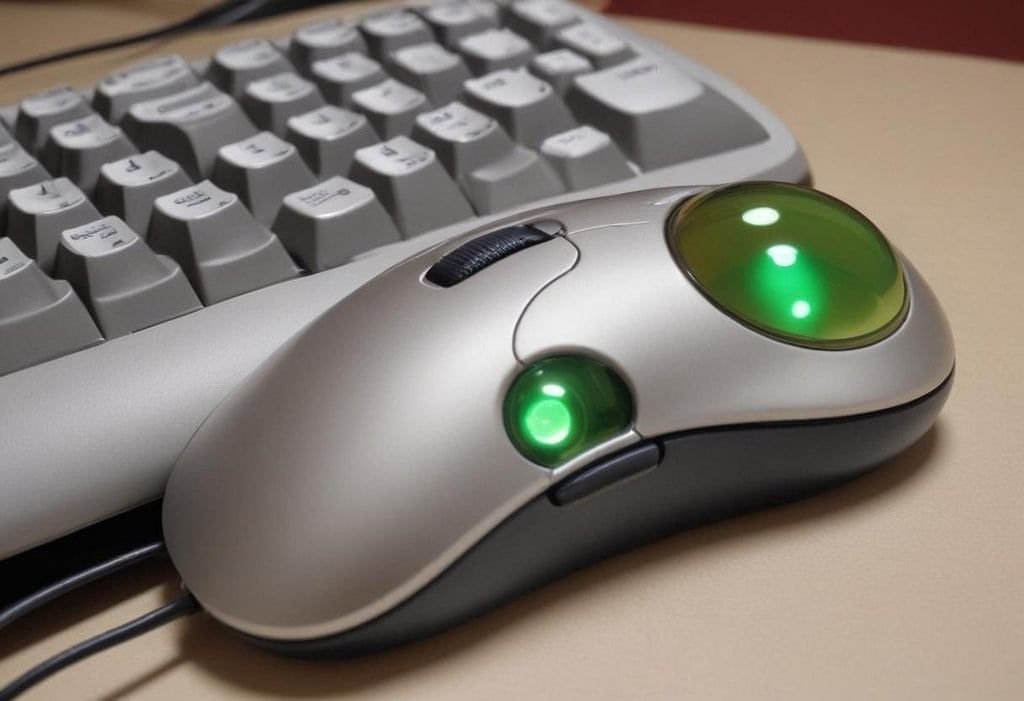
- Trackball is a different kind of pointing tool, like a mouse.
- Trackball helps move and control the cursor on a computer screen.
- It's commonly used in CAD/CAM workstations and can be found in specialized workstations like radar consoles in air traffic control rooms and sonar equipment on ships or submarines.
Joystick:
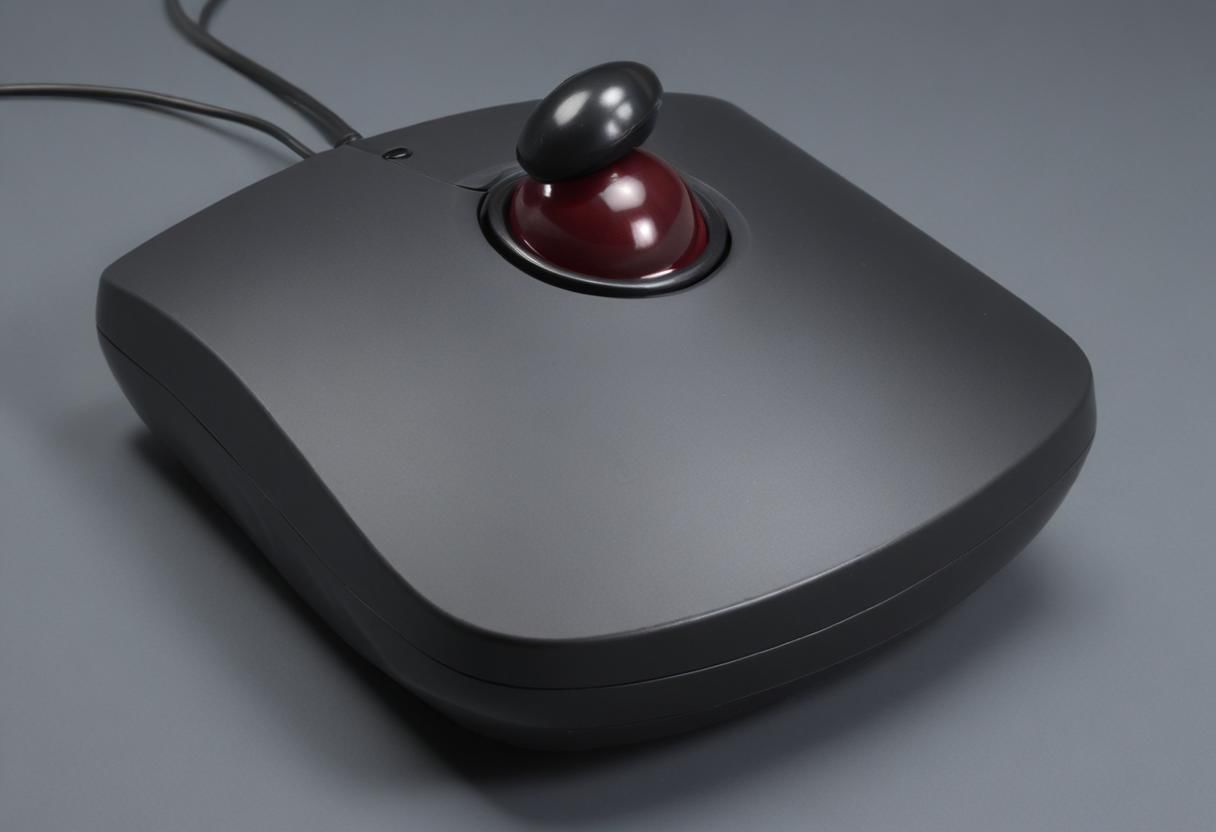
- Joystick is a tool that can move in all directions and manages the movement of the pointer.
- Joysticks find their use in flight simulators, Computer Aided Design/Computer Aided Manufacturing (CAD/CAM) systems, etc.
- A joystick is much like a mouse, but when you stop moving the mouse, the pointer stops on the screen. In contrast, when using a joystick, the pointer keeps moving in the same direction it was pointing previously.
- Joysticks enable movement in every direction, covering a full 360 degrees.
Light Pen:
- Light pen is a handheld electro-optical pointing device used for making drawings, graphics, and menu selection.
- The pen has a photocell in a small tube that detects light from the screen when brought close, producing a pulse.
- Primarily employed in Personal Digital Assistants (PDAs), the light pen is helpful for pinpointing specific locations on the screen. However, it does not yield any data when placed over an empty screen area.
Touch Screen:
- Touch screen is a device that takes input when a user touches the computer screen.
- Touch screens have beams of infrared light that form a grid across the screen.
- They are commonly found in places like ATMs, hospitals, airline reservation systems, and supermarkets.
Barcode Reader:
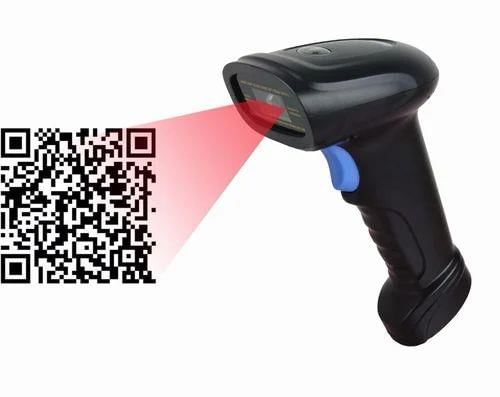
- Barcode reader is a device for reading barcodes on products.
- A light detector in the reader recognizes special bars at the ends of the image.
- Example: In a supermarket, the reader scans product prices in barcode form.
- A barcode is stripes of dark and light ink encoding information.
Optical Mark Reader (OMR)

Key Pointers:
- OMR stands for Optical Mark Recognition.
- It identifies marked responses on paper using light.
- OMR translates marks into data for storage, analysis, and reporting.
- Commonly used in reading objective test answers, voting, and evaluations.
- OMR is also called Optical Mark Recognition. It involves finding marked answers.
- OMR detects marks on paper using light reflection to note data presence or absence.
- The system decodes mark patterns into data for computer processing.
- OMR is extensively used for reading objective test answers, voting systems, and evaluations.
Optical Character Recognition (OCR)
OCR: Optical Character Recognition
- OCR, which stands for Optical Character Recognition, is a technique used to scan printed pages and change them into editable text.
- This technology assists computers in understanding the content of images by transforming dots into readable words and letters.
- OCR is commonly used to extract text from images and has various applications such as reading telephone bills, electricity bills, and insurance premiums.
- Improvements in OCR focus on improving accuracy, leading to the creation of Intelligent Character Recognition (ICR).
Magnetic Ink Character Recognition (MICR)
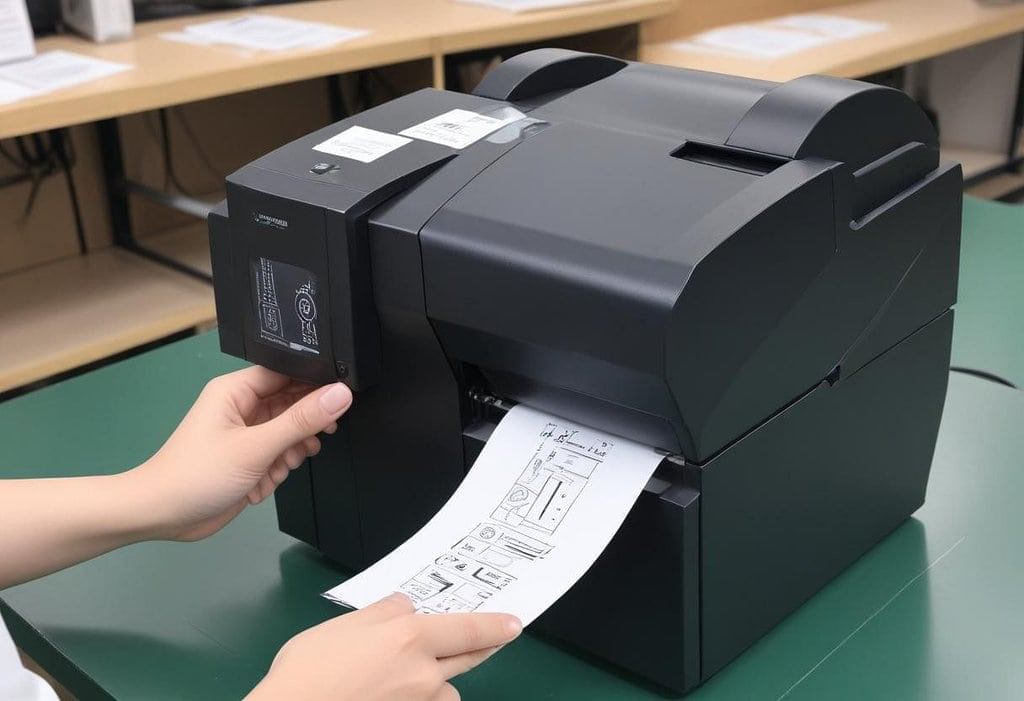
- MICR detects characters by looking at their shapes in a grid and then sends the data to the computer.
- The characters are printed with a special ink (containing iron oxide) that can be magnetized.
- Commonly found in banks, it's used to process checks, identifying the magnetic numbers at the bottom.
Smart Card Reader:
It is a tool used to connect to the microprocessor of a smart card.
Two types of smart card readers exist:
- Memory cards have non-volatile memory storage and specific security logic.
- Microprocessor cards contain volatile memory and microprocessor components.
The card is typically made of plastic, usually PVC.
Smart cards are employed by large companies and organizations for enhanced security authentication.
Biometric Sensor:

- Biometric Sensor is a tool that recognizes the unique physical characteristics of a person.
- These sensors are utilized to record the attendance of employees or students in various organizations or educational institutions.
Scanner:
Scanner is an optical input device that uses light to change an image into an electronic form for saving on a computer.
It helps to change data and images on paper into digital form. Scanners are useful for keeping documents in their original form for future modifications.
Scanners can save images in both gray scale and color modes. The main types of scanners include:
- Handheld scanners
- Flatbed scanners
- Drum scanners
Microphone (Mic):
- We can input information into the computer using a special device called a microphone or mic.
- A mic changes the sound it picks up into the computer's format known as Digitised Sound or Digital Audio.
- To change spoken words into digital data, we require an extra piece of hardware called a Sound Card.
- Sound is commonly used in multimedia applications. For instance, we can enhance our presentations by including recorded voice-overs, music, or sound effects.
- Currently, microphones are utilized with software that recognizes speech. This means we can speak instead of typing, and our spoken words will appear in the document.
Webcam (Web Camera):

- A webcam is a digital camera linked to a computer, useful for video calls and online conversations.
- Modern webcams are either built into a computer's screen or connected through USB, firewire, or Wi-Fi.
Output Devices:
An output device is a component of a computer that takes information from the computer and changes it into a different form. This form could be sound, images, text, or a physical copy like a printed paper.
Various commonly used output devices include:
- Speakers: These produce sound output.
- Monitor: It displays visual information.
- Printer: This device creates hard copies of documents.
Monitor:
It is also known as Visual Display Unit (VDU). The monitor comes with the computer to show the display.
An image on the screen is made by a pattern of dots, also called pixels.
There are two types of monitors: monochrome display and color display.
A monochrome display uses only one color for text, while a color display can show 256 colors at once.
The quality of the image depends on three things:
- Resolution of Screen: It's the number of pixels horizontally and vertically. A higher resolution means pixels are closer together.
- Dot Pitch: The diagonal distance between colored pixels. Smaller dot pitch means better resolution.
- Refresh Rate: How many times per second a new image is drawn. Higher refresh rate means a more solid image. Measured in Hertz (Hz).
Popular monitor types include:
- Cathode Ray Tube (CRT): Rectangular monitor seen on desktops working like a TV with a vacuum tube.
- Liquid Crystal Display (LCD): Thin, flat, lightweight screen with liquid between plates, used in laptops and notebooks.
- Light Emitting Diode (LED): Emits light with electrical current. Modern LEDs can produce RGB and white light.
- 3-D Monitor: Gives depth perception. Interactive 3-D creates virtual reality experience for users.
- Thin Film Transistor (TFT): Features a TFT for each pixel, allowing rapid state changes.
Printers
A printer is a device that takes information from a computer and puts it on paper, either in color or black and white. The quality of a printer depends on how clear the print is.
Printer speed is measured in Characters Per Second (CPS), Lines Per Minute (LPM), and Pages Per Minute (PPM). The resolution of a printer is measured in Dots Per Inch (DPI) and shows how detailed the print is.
There are two main types of printers:
- Impact Printer: This printer works by hitting a paper and ribbon together to create characters, similar to a typewriter.
- Non-Impact Printer: This printer uses different technologies like electrostatic chemicals and inkjet to create prints without hitting anything.
Types of Impact Printers:
- Dot Matrix Printer: Prints by hitting a ribbon with pins to form characters.
- Daisy Wheel Printer: Creates characters on petals, similar to typewriter keys.
- Line Printer: Prints entire lines of text at once but with lower quality.
- Drum Printer: Uses a drum to transfer an image onto paper.
Types of Non-Impact Printers:
- Inkjet Printer: Sprays tiny droplets of ink onto paper to create images.
- Thermal Printer: Uses heat on special paper to create characters.
- Laser Printer: Utilizes a laser beam to print high-quality graphics and text.
- Electromagnetic Printer: Fast printers that use electrographic technology.
- Electrostatic Printer: Commonly used for large format printing, favored for speed and low cost.
- Chuck Hull, an engineer, invented the first 3D printer in 1984. These printers can create real-life models of almost anything.
Plotter
A plotter is a specialized type of output device similar to a printer, used for creating images on paper using tools like pens, pencils, or markers to generate vector graphics.
They are primarily employed for producing large-scale drawings or images such as architectural plans, mechanical blueprints, AUTOCAD, CAD/CAM designs, etc.
Plotting devices typically exist in two primary forms:
- Flatbed plotter
- Drum plotter
Speaker
- It is an output device that receives sound in the form of electric current. It needs a sound card connected to a CPU, that generates sound.
- These are attached internally or externally to a computer system.
- These are used for listening music, for being audible in seminars during presentations, etc.
Headphones
- A pair of small speakers or sometimes a single speaker, held close to your ears and connected to a source like an audio amplifier, radio, CD player, or media player.
- Also called stereo phones, headsets, or cans.
Projector
An output device used for showing computer information on a big screen for many people to see at once.
Projectors are commonly used in classrooms or large meeting rooms where many people are present. They show a temporary display.
Two main types of projectors are:
- LCD (Liquid Crystal Display) projector
- DLP (Digital Light Processing) projector
Input/Output (I/O)Port
Input/Output ports are like doorways that let you connect things like printers, screens, and joysticks to a computer.
Types of Ports:
- Parallel Port: Connects many data wires at once, sending eight bits of data simultaneously for fast transmission. Commonly used for printers.
- Serial Port: Sends data bit by bit through a single wire, making it slower. Often used for modems, plotters, and barcode readers.
- Universal Serial Bus (USB): A widely used port on computers, with 2 to 4 ports usually available. It's easy to use and supports plug-and-play functionality.
- Firewire: Links audio and video devices like cameras. Expensive but great for moving large amounts of data quickly. Used for connecting hard drives and new DVD drives with high transfer speeds.
Tit-Bits
- MP3 is a format for digital audio that compresses data.
- Peripheral devices are I/O devices attached externally to a computer.
- Software for speech recognition can change voice data into words the computer can understand.
- A dumb terminal is a simple output device that gets data from the CPU.
|
48 videos|44 docs|33 tests
|
FAQs on Computer Hardware - Computer Awareness and Proficiency - SSC CGL
| 1. What are some examples of input devices commonly used in computer hardware? |  |
| 2. What is the function of an Optical Mark Reader (OMR) as an input device? |  |
| 3. How does Optical Character Recognition (OCR) work as an input device? |  |
| 4. What is the purpose of Magnetic Ink Character Recognition (MICR) in computer hardware? |  |
| 5. How do printers function as input devices in computer hardware? |  |




















